It’s true. Ghost in the Shell is being made into a live action film.
 A few years ago, that sentence would’ve spit out the same thought I get when people say there are ‘talks’ about a live action Cowboy Bebop or Gundam film: useless rumor. But with the recent news of Margot Robbie, the talented actress who played opposite Leonardo DiCaprio in the 2014 smash film Wolf of Wall Street, being cast as the film’s protagonist Major Motoko Kusanagi, Ghost in the Shell really seems to be turning into a reality. Because of that, and my general feeling about anime-turned-live-action projects, I’d say it’s definitely worth talking about.
A few years ago, that sentence would’ve spit out the same thought I get when people say there are ‘talks’ about a live action Cowboy Bebop or Gundam film: useless rumor. But with the recent news of Margot Robbie, the talented actress who played opposite Leonardo DiCaprio in the 2014 smash film Wolf of Wall Street, being cast as the film’s protagonist Major Motoko Kusanagi, Ghost in the Shell really seems to be turning into a reality. Because of that, and my general feeling about anime-turned-live-action projects, I’d say it’s definitely worth talking about.
Now when I say I have feelings about live action remakes, they aren’t neatly categorized ones. The notion of loving or hating a film before it’s even made is a real crapshoot and between the cast list, director, and screenwriter, there are still a lot of holes to fill. But if history shows any inkling of repeating itself, we’re not in for a good time.
But let’s start by talking about where the idea of producing a live action remake of an anime comes from. Anime series in Japan usually start out as a manga, or a graphic novel. The novel then can be transformed into an animated series. The manga can have a long-running series before it’s picked up and made into an animated series (like Dragon Ball Z), or be relatively new (like One Piece, which was made into an animated series in 1998, only two years after its first publication). Anime series also have been known to take risks and deviate from the plot of the original manga, and a good example of this would be Fullmetal Alchemist, debuting as an animated series in 2003. The plot included most of the same characters and the overarching themes, but writer Shō Aikawa took some major liberties in deciding the order of events. Then in 2009, another series came out, Fullmetal Alchemist: Brotherhood. This new series played much closer to the manga and left fewer stones unturned, garnering a lot of praise. But within the realm of anime, plot change from the manga to the series is pretty forgivable – there’s a lot to account for when going from one medium to another, in this case book to film. And even if manga are typically more expressive and have much more illustration that regular literature, the process comes with several challenges, some of which result in some plot getting cut or a character arc being changed. And sometimes, animated series will get animated films of their own. Fullmetal has gotten two, and the Gundam series, Cowboy Bebop, and even Ghost in the Shell have their titles. These films are usually hit or miss, but it’s easy to see that the animators, writers, and voice actors are working their hardest to make their fan base happy.
But when it comes to taking an animated film and making it into a live action film, the problems are almost identical to that of making a book into a movie. Why? Well, for me, there are really three big reasons. One: anime is boundless. There isn’t much you can’t do with pens, paper, and a computer program or two. Characters can have big expressions and imaginative costumes or designs, actions and reactions can be overdrawn to represent raw, unfiltered emotion, and the location possibilities are endless. When you decide to move that over to film, you get a lot of this:
That’s a poster from Drangonball: Evolution, the remake of the popular anime Dragonball Z. It’s a film I’m still trying to bleach from my retinas. The character designs are laughable, the script so very forced, and the plot makes anime fans look immature, to say the least.
But that’s not the only time a remake has really scorned the people who helped make it popular, anybody remember Shyamalan’s Avatar: The Last Airbender?
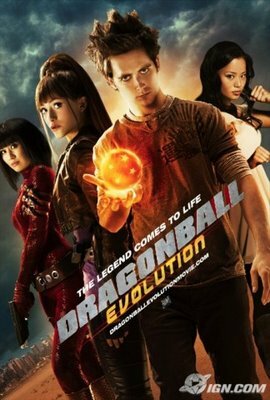 If not, be sure to use that two hours of your life to the fullest, because I can never get mine back. Avatar was proof that even if you had actors who were talented and smart and even knowledgeable of the material, a writer who doesn’t know what they’re doing can send everything down the drain at breakneck speed.
If not, be sure to use that two hours of your life to the fullest, because I can never get mine back. Avatar was proof that even if you had actors who were talented and smart and even knowledgeable of the material, a writer who doesn’t know what they’re doing can send everything down the drain at breakneck speed.
But I can’t completely blame the writer, because truth is, someone else (probably in marketing) is pulling the strings. And this is where my second biggest problem comes in: the demographic gets exponentially larger. When you’re making an animated movie from a manga, you know who your audience is. You started in animation, a demographic that is niche, to put it lightly. There’s a special kind of formula that goes along with writing, animating, and producing these sort of films, just as there is for any film. And just as with any other film, there’s an audience that comes with it. For example, if you’re a die-hard horror fan, you’re probably not going to catch the newest romantic comedy at the theater, because it just isn’t your cup of tea. And the same could be said of animated films, fans of anime know what they want (and no, it isn’t fan service), and filmmakers are well-versed in how to deliver a product that fills that need; they really aren’t out to draw in anyone else.
But once that movie gets put into the hands of a big name producer like Michael Bay, the demographic is blown wide open. Suddenly, this isn’t just for the people who have watched the series, this is a film for your everyday movie go-er, and that means a lot of changes that most fans won’t agree with.
I can’t tell you how much I don’t want the smash 1988 animated film Akira to be made into a live action film, which is set to film this Spring. Not because I don’t want people to see it, I’d gladly give anyone the copy I own, rather I think that Akira is right in the medium it needs to be, and I think this is where my third reason comes into play: anime just isn’t taken seriously. There’s this odd stigma to animation, like it’s something that can’t be a “real film” until it’s made into a live action version. There’s the stigma that anime isn’t art and that it’s all fan service, or that anime fans are somehow not in touch with reality because they prefer their films to be animated. To be honest, those are all part of the stigma of not being taken seriously – and that really needs to go. And honestly, it’s going to take a lot more than Miyazaki’s Spirited Away to make things better. But I’m afraid this is what’s going to happen with Ghost in the Shell. The protagonist is a strong female cyborg who leads a law-enforcement division of the Japanese National Public Safety Commission. Her basic job is to capture powerful hackers and bring them to justice. But all I can think of is people at the planning meeting saying, “So, we just need to make a lady Robocop, right?”
But hey, maybe I’m wrong. Maybe this remake will set a standard and bring animation into a new world of possibility. Maybe we’ll do something right.
Or maybe you’ll find me in Spring with an Akira picket sign in my hand.
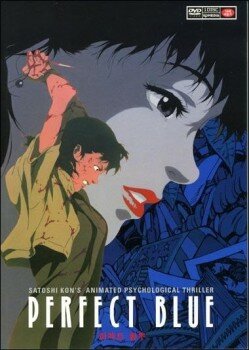 That’s my immediate response to the title “Perfect Blue.” Granted, there are plenty of things to like about the 1997 release from directors Hideki Hamazumm and Satoshi Kon. It gives us a great, thrilling story, following our protagonist Mina, a popstar who is forced to drop her career and pursue an acting gig to remain relevant. Though the plot goes much deeper than that, because Mima’s sudden retirement upsets a devoted fan and she begins receiving threats, obscene calls, and things take a set of extremely upsetting turns.
That’s my immediate response to the title “Perfect Blue.” Granted, there are plenty of things to like about the 1997 release from directors Hideki Hamazumm and Satoshi Kon. It gives us a great, thrilling story, following our protagonist Mina, a popstar who is forced to drop her career and pursue an acting gig to remain relevant. Though the plot goes much deeper than that, because Mima’s sudden retirement upsets a devoted fan and she begins receiving threats, obscene calls, and things take a set of extremely upsetting turns.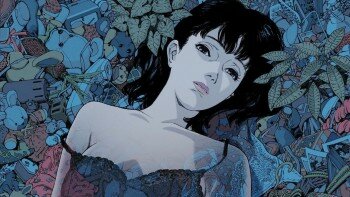 But for all those good things that are built up in the first three-fourths of the film, the end just throws it all out. I won’t give away the ending by any means (because it’s a great twist that I really enjoy), but the very end shows this intense progress by our main character that seems incredibly hokey when it’s all said and done. It seems like the film has built up all this sadness, all this mental instability, but they felt required to stabilize things by the end. It just felt like a cop-out, and maybe when you check it out, you’ll know what I’m referring to.
But for all those good things that are built up in the first three-fourths of the film, the end just throws it all out. I won’t give away the ending by any means (because it’s a great twist that I really enjoy), but the very end shows this intense progress by our main character that seems incredibly hokey when it’s all said and done. It seems like the film has built up all this sadness, all this mental instability, but they felt required to stabilize things by the end. It just felt like a cop-out, and maybe when you check it out, you’ll know what I’m referring to.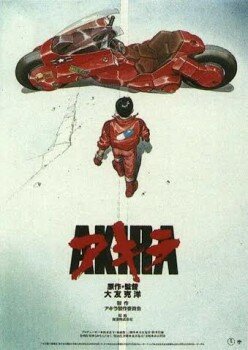
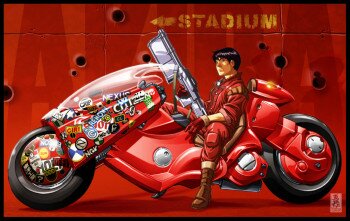
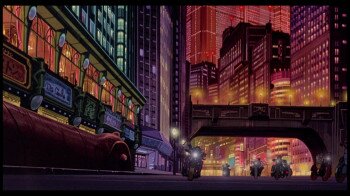 because Akira was animated, some reviewers were willing to criticize director
because Akira was animated, some reviewers were willing to criticize director 
